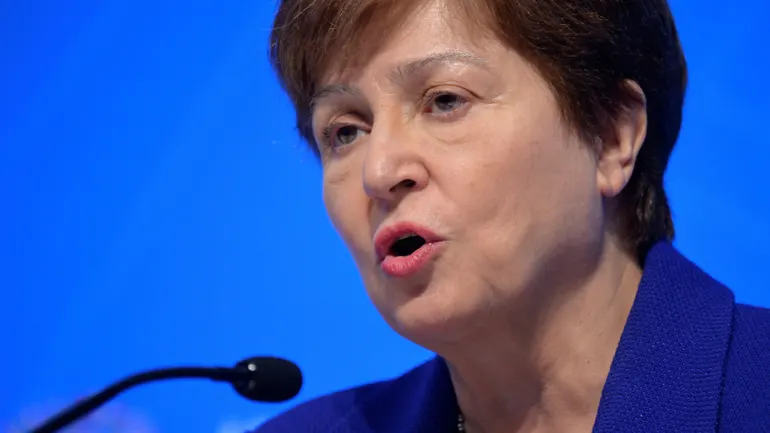· 5 min read
The COVID pandemic has certainly not slowed down Europe's quest to save the planet from global warming.
After further tightening its net emission target by 2030 from 40% to at least 55% compared to 1990 levels to achieve climate neutrality target by 2050, on July 14 the European Commission released its long-awaited Fit for 55 policy. It contains a dozen proposals directed at upgrading existing climate, energy and transport legislation aimed at reaching such targets.
Among the different proposals, a new Carbon Border Adjustment Mechanism, or CBAM, is probably the most relevant beyond the EU's borders and, therefore, the most contentious.
The mechanism is intended as a way of mitigating the competitive disadvantage suffered by European industries as a result of the EU's bold green policies by taxing the carbon content of imports into the EU, making them equivalent to goods produced in the EU in terms of carbon pricing.
In other words, non-EU companies exporting to Europe will need to pay the same price for their carbon footprint in Europe as European companies.
This is the way it will work: European importers of goods covered by CBAM will be required to buy certificates, the price of which will mirror that of the EU's emissions trading system and then submit them to a newly established CBAM Authority.
This mechanism, which for many simply equates to a tax on imports, has been criticised by a number of national governments, including China and the U.S., but also international organizations such as the International Monetary Fund. According to the IMF's managing director Kristalina Georgieva, CBAM is too distortive a mechanism compared to other options, such as a carbon price floor. Others are arguing that CBAM may violate World Trade Organization rules.

Against the odds, the EU Commission has decided to push ahead with the CBAM proposal, although with a narrower scope focusing mainly on cement, iron and steel, aluminium, fertilisers and electricity, and a long interim period of up to 2035 before it is implanted in full. Furthermore, before this proposal becomes a reality it must be approved by the European Council and then pass the European Parliament, which could water it down further.
The prospect of the EU setting up a mechanism that will have such a wide global worldwide impact is as important as worrisome for China.
First of all, China is the world's larger greenhouse gas emitter, with 27% of total carbon emissions globally. This means that any mechanism taxing emissions produced overseas should worry Beijing, no matter how small its scope at the very beginning.
Secondly, still the world's largest exporter of manufactured goods, China's market share has actually increased due to the pandemic, with close to 20% of global exports in 2020.
Thirdly, as the European Union is the most important standard-setter in the world, its CBAM may be replicated by other nations or trading blocs. The biggest risk for China would if the Biden administration potentially reversed Washington's long-standing opposition to CBAM.
China's introduction of its own emissions trading market is important, although the number of sectors included is very narrow -- basically, electricity only -- and cannot be properly compared with that of the EU, which will expand even further to transportation and construction as a consequence of the Fit for 55 policy.
The first price offered for carbon in China remains miles away from that of Europe -- $8 per ton of CO2 compared to over $55 in the EU -- but the direction is clear. The potential convergence with EU prices is not only welcome for environmental reasons. It will also have a bearing on the impact of CBAM on China, as the possibility of a rebate exists for countries with similar prices in their own emissions trading markets.
While this might be encouraging for China, the major outstanding risk is the fact that CBAM's sectoral coverage is sure to expand to include ceramics, glass, paper and other chemicals. Over time, it will likely include all manufactured products.
Given that the EU carbon price is currently already above 50 euros per tonne of CO2, it can be safely assumed that the effective price of carbon paid by EU producers in import-competing sectors subject to the EU's emissions trading system will gradually rise to at least 50 euros per tonne by 2035.
Given that the contribution of coal to the production of its electricity remains above 70%, China could see its external competitiveness severely hindered by a more comprehensive CBAM. Even more so if it were to be applied by more developed countries, especially the U.S.
All in all, the mechanism for carbon border adjustment announced by the EU Commission might currently appear close to irrelevant in China given its limited scope, as well as the possibility that it might be overturned by the WTO. However, long-term oriented Chinese policymakers will surely see the risks of such an embryonic measure being expanded in its sectoral scope, and being implemented by others.
On that basis, expect an intensive Chinese lobbying campaign in the EU's headquarters and key member states to dilute the proposal even further and, when possible, eliminate it fully.
This article first appeared on NIKKEI Asia. Energy Voices is a democratic space presenting the thoughts and opinions of leading Energy & Sustainability writers, their opinions do not necessarily represent those of illuminem.






